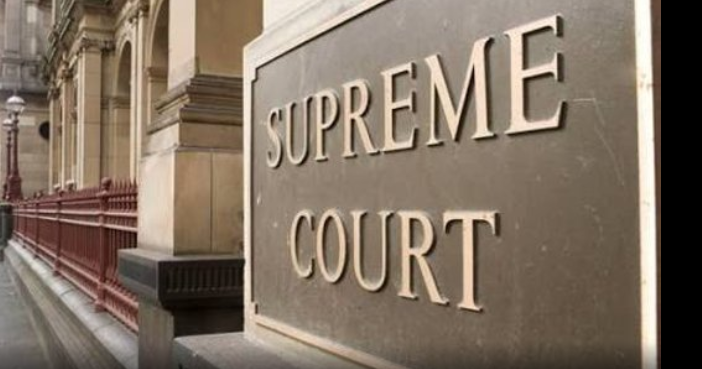TJ (a pseudonym) v. The Bishop of the Roman Catholic Diocese of Wagga Wagga Mark Edwards [2023] VSC 704
Summary
The landscape in relation to quantum assessments in historical abuse cases involving the Catholic Church has shifted significantly due to a recent jury verdict handed down in Victoria.
On 10 November 2023, a Victorian Supreme Court jury awarded $3.3 million in compensation to a victim abused by a former priest and convicted paedophile in the first time a civil trial against the Catholic Church has been tested before jurors.
The plaintiff was awarded damages of $1.1 million for pain and suffering, $965,000 for loss of earnings and $1.3 million for exemplary damages.
Following the verdict, the Catholic Church applied for the exemplary damages to be set aside questioning the legal basis for the jury to make the award and the matter was adjourned to 17 November 2023 for trial judge, J O'Meara, to hear the issue. On 30 November 2023, J O'Meara handed down his judgement.
We discuss the case and its implications below.
Facts
In this case, the plaintiff launched civil action against the Catholic Church (Bishop of Roman Catholic Diocese of Wagga Wagga Mark Edwards) over alleged abuse perpetrated by convicted paedophile and former priest, Vincent Kiss, now aged 91, who was director of youth for the Wagga Wagga diocese at the time.
In 2002, Kiss pleaded guilty to 12 sexual assault charges related to incidents between 1966 and 1971 against four then-teenage boys, including the plaintiff, who first met Kiss when he was a 14 year-old altar boy.
The case was originally brought against the Church by the four men who suffered abuse at the hands of Kiss in the 1960s and 70s however three of the men settled out of court, with only the plaintiff's case continuing to trial.
During the trial it was alleged that Kiss repeatedly abused the plaintiff in 1972 when he was in year 9 and that this abuse continued for more than two years. Despite a successful teaching career in NSW and the United Kingdom, the plaintiff told the court of the extensive psychological damage inflicted by Kiss as he recounted the grooming and abuse perpetrated by the former priest.
Throughout the trial, the Church claimed the plaintiff was entitled to $250,000 in damages for pain and suffering and that he should not receive any compensation for past or future economic loss.
The Church also initially claimed in its legal defence that it was unaware of Kiss’ abuse of the plaintiff, despite Kiss pleading guilty to criminal charges in 2002 and serving a seven-year prison sentence. The Church only conceded the abuse and amended its statement of defence four days before the trial began.
During the trial counsel for the plaintiff argued that exemplary damages were warranted because of the Church's conduct towards the plaintiff, in particular its failure to admit that the abuse occurred and to respond to a prior complaint concerning alleged abuse from another victim made against Kiss in 1968.
Jury decision
At the conclusion of the trial, the Supreme Court jury delivered its verdict awarding the plaintiff $3.3 million in damages. That award comprised of:
- $1.1 million for pain and suffering;
- $965,000 for loss of earnings; and
- $1.3 million for exemplary damages, which related to the Church's conduct towards the plaintiff.
Aggravated and exemplary damages
Following the jury verdict, the parties filed written submissions relating to the issue of exemplary damages which counsel for the Church argued should be set aside questioning whether there was a legal basis for the jury to award the plaintiff exemplary damages.
At a subsequent hearing on 17 November 2023, J O’Meara gave the Church the opportunity to make further submissions on the issue. At the subsequent hearing, Counsel representing the Church outlined its objections, including that there was insufficient evidence and the lack of a legal basis for an award of exemplary damages. Counsel for the Church argued further that there was no evidence it knew of the complaint and accordingly that there was no evidence it had acted in deliberate, reckless or disregard of the plaintiff.
Counsel for the plaintiff, however, dismissed the Church's argument submitting that the jury verdict should stand and that the court's power to set aside a jury verdict ought to only be exercised in the clearest of circumstances which was not apparent in this case. In support of this, counsel for the plaintiff noted that the Church had previously accepted that the abuse occurred in making a compensation payment at an earlier time.
Ultimately, the J O'Meara found that there was no basis to support the Church’s argument the award for exemplary damages should be set aside in circumstances where it had ultimately admitted vicarious liability for the abuser’s conduct.
The Church is otherwise expected to appeal the verdict generally.
Implications
- While for some time we have seen a general upward trajectory in the amount awarded for compensation across various heads of damages ─ in particular, general damages ─ the above verdict represents a seismic upward trend in jury damages awards, which will undoubtedly have an immense impact on the way quantum in such cases is assessed moving forward.
- The decision (which is understood to be on appeal) establishes a new benchmark for general and exemplary damages in abuse cases involving the Catholic Church and will likely set a precedent for other survivors of abuse, and the decision is perhaps reflective of a growing contemporary community outrage in response to sexual abuse perpetrated on vulnerable children.
- Additionally, the decision is significant in that it represents the first in Australian history against the Catholic Church and the first time exemplary damages have been awarded against the Church. It is also the highest amount the Church has ever paid out to a victim.
- Assessing quantum in such cases remains complex and it remains to be seen whether, if damages awards continue at this level, the way in which these cases are currently managed is sustainable in the longer term. Only time will tell if such cases will represent permanent change in the institutional abuse landscape and increase the level of damages plaintiffs can expect to receive at hearing.
Key contacts
For more information on how the outcomes in the above cases may impact your organisation, please contact a member of our national Casualty team.
All information on this site is of a general nature only and is not intended to be relied upon as, nor to be a substitute for, specific legal professional advice. No responsibility for the loss occasioned to any person acting on or refraining from action as a result of any material published can be accepted. Lander & Rogers is furthermore committed to providing legal advice and content that is factual, true, practical and understandable. Learn more about our editorial policy.
 Client portal
Client portal












